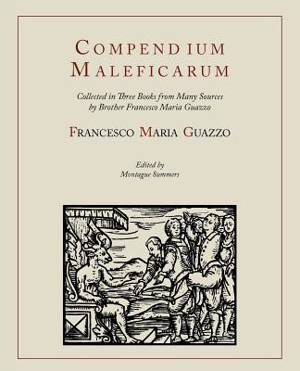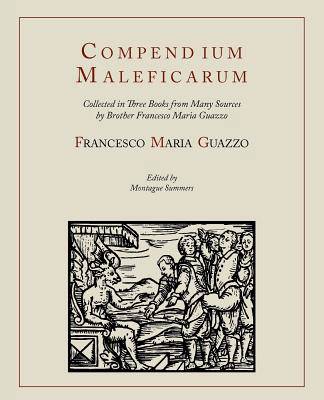
- Afhalen na 1 uur in een winkel met voorraad
- Gratis thuislevering in België vanaf € 30
- Ruim aanbod met 7 miljoen producten
- Afhalen na 1 uur in een winkel met voorraad
- Gratis thuislevering in België vanaf € 30
- Ruim aanbod met 7 miljoen producten
Zoeken
Compendium Maleficarum [Compendium of the Witches]
Francesco Maria Guazzo, E Allen Ashwin
Paperback | Engels
€ 17,45
+ 34 punten
Omschrijving
2011 Reprint of 1929 Edition. Full facsimile of the original edition, not reproduced with Optical Recognition Software. Francesco Maria Guazzo was an Italian priest in Milan. In the "Compendium Maleficarum" (Compendium of the Witches), he cites numerous experts on the subject, among them Nicholas Remy. He describes the eleven formulas or ceremonies previous to the vow to Satan, allegedly necessary to participate of the Sabbath; besides, Guazzo offers detailed descriptions of the sexual relationships between men and succubi, and women and incubi. The book was not translated into English until 1929, when this was accomplished under the direction of the witchcraft scholar Montague Summers. It discusses witches' alleged powers to transport themselves from place to place, create living things, make beasts talk and the dead reappear. Also discusses witches' powers, poisons and crimes, sleep-inducing spells and methods for removing them, apparitions of demons and specters and more. Guazzo also established also a classification of the demons, inspired by a previous work by Michael Psellus.
Specificaties
Betrokkenen
- Auteur(s):
- Uitgeverij:
Inhoud
- Aantal bladzijden:
- 228
- Taal:
- Engels
Eigenschappen
- Productcode (EAN):
- 9781614271475
- Verschijningsdatum:
- 10/08/2011
- Uitvoering:
- Paperback
- Formaat:
- Trade paperback (VS)
- Afmetingen:
- 190 mm x 235 mm
- Gewicht:
- 399 g

Alleen bij Standaard Boekhandel
+ 34 punten op je klantenkaart van Standaard Boekhandel
Beoordelingen
We publiceren alleen reviews die voldoen aan de voorwaarden voor reviews. Bekijk onze voorwaarden voor reviews.








